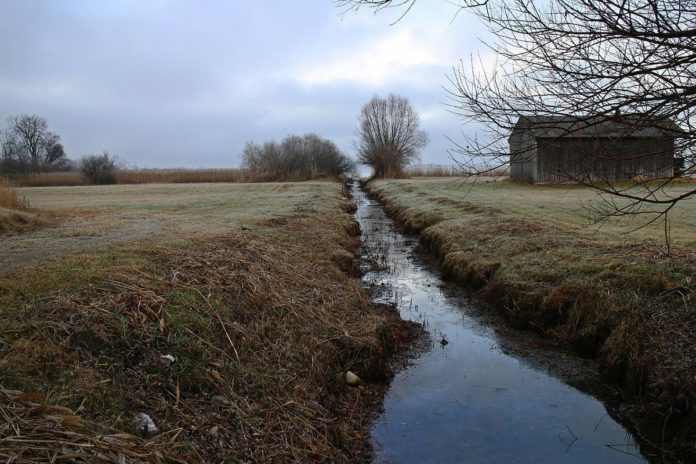Now that most of the silage has been made, it might be a good time to look at carrying out some land drainage on your farm, if ground conditions allow, writes Shane Devaney, Teagasc beef advisor, Longford Town.
Before carrying out any of this work, the three things you need to look at first are: (1) cash flow, how much can I spend? (2) what fields need drainage the most and (3) what type of drainage system would work best for you.
Where did I begin?
Start by cleaning out all of the main drains on the farm. This has the benefit of getting all of the water that has been blocked up either in drains or pipe shores moving again and this alone can have a huge impact on drying out some of the fields where there was an issue.
In fields where there is still a drainage problem, it is best to investigate what is causing this. To do this, you have to dig a pit about 1.5 metres deep and 2 metres square.
The reason for this is to look at the soil profile underneath the surface, (a) to examine permeability of the soil, (b) is there an issue with a high-water table.
Drainage issues
There are normally two types of drainage issues on farms. (1) A heavy permeable layer near the surface which prevents water from soaking down to the layers underneath (2) a high-water table that rises during times of heavy rainfall and causes excess water rising up from underneath the soil.
For the first one, a shallow drainage system is required which involves pipe shores with 10mm to 40mm clean drainage stone and mole drains.
Mole drains work best in a heavy clay type soils. Where there is a high-water table deep drains work best. This involves inserting pipe shores at a depth of 1.5 metres with stone on top of this and a layer of topsoil at the surface. This has the benefit of lowering the water table and drying out the soil layers underneath.
In either drainage system, there is no benefit of bringing drainage stone to the surface. Always cover drainage stone with a layer of good topsoil about 10 inches in depth.
Teagasc services
In Teagasc, we offer a service of doing up a detailed drainage plan which involves a farm visit and site investigation to determine what drainage system would work best.





